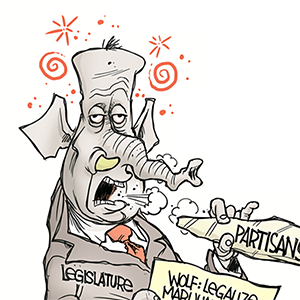As the US invests in infrastructure at record levels, construction workers may be hard to find
Published in Slideshow World
Subscribe
As the US invests in infrastructure at record levels, construction workers may be hard to find
Between a growing housing deficit and historic federal funding for infrastructure improvements, construction projects are arising across the nation. At the same time, there may not be enough qualified workers to move these projects forward.
There were 370,000 construction job openings in August, up 138,000 from the month prior, according to Bureau of Labor Statistics data. Meanwhile, over 90% of general contractors who are hiring reported that they are struggling to fill positions, according to a 2024 survey by the Associated General Contractors of America. That's up from the 2023 survey, indicating a continually tightening construction labor market.
Machinery Partner identified these market gaps, drawing from AGC and other industry surveys, reports, and news coverage. The analysis also explores some causes of the disconnect and solutions to get more workers into necessary trades.
The shortage isn't about a lack of candidates: A Chamber of Commerce analysis shows that there are about as many unemployed construction workers as job openings—and even slightly more. However, more than 6 in 10 contractors said available candidates lack the necessary qualifications for open positions, whether in terms of credentials or actual skills. Half also said that new hires either fail to show up or quit soon after starting.
The impact, especially in a time of great demand, can be profound. Projects will take longer and cost more, while some may be delayed or canceled altogether. For publicly funded projects, that means American tax dollars won't go as far, and governments may need to request more funds to get them done. Crucially, when it comes to infrastructure projects, delays and cancellations can pose a public safety threat as roads, bridges, and dams continue to deteriorate.
Visit thestacker.com for similar lists and stories.
The workforce lacks plumbers, carpenters, electricians, and other skilled laborers
In terms of the actual builders missing from the workforce, AGC's survey shows that contractors are struggling to fill roles for almost all craft positions—but particularly for cement masons, mechanics, plumbers, carpenters, electricians, and pipe fitters/welders. On the business side, they are having trouble hiring superintendents, project managers and supervisors, and estimating personnel. Most of these roles are projected to grow faster than average over the next decade, BLS projections show, so the current shortage will only be exacerbated when the need to fill future positions arises.
An aging American population is contributing to a worker shortage across industries, and construction is no exception. In addition, construction is heavily dependent on immigrant workers—and undocumented workers, in particular—so stricter immigration policies in recent years have contributed to the industry's shortage.
What's more, educators, policymakers, and some parents have pushed younger Americans to pursue four-year degrees rather than trade jobs in recent decades. The federal government spends nearly four times as much supporting traditional college degree programs than it does on workforce education and training for construction and related fields, according to a recent study by the Progressive Policy Institute and the Associated General Contractors of America. That marks an $83 billion difference in federal support between these two career pathways and translates to much less focus on trade occupations at the national level.
Filling the gaps
Despite the lack of investment, Americans appear to have a renewed interest in trade occupations. In 2024, enrollment grew by 17.6% at community colleges with a largely vocational program focus, adding 117,000 new students, according to the National Student Clearinghouse Research Center. To maintain this momentum, the joint PPI-AGC report recommends that federal and state policymakers invest more money toward workforce development in these roles and coordinate with industry employers.
For their part, contractors report they are working to attract more people to the industry and to train existing workers. Six in 10 AGC survey respondents said they gave craft workers bigger raises this year compared to 2023 and are posting jobs on social media, through distribution software, and using other targeted digital advertising methods. Half of firms partner with high schools and postsecondary institutions to build stronger career pipelines.
Within their own workforces, about four in 10 firms said they have increased spending on training and professional development—some in new ways. Increasingly, contractors are adopting virtual education programs to offer their employees ways to advance their skills, whether through video classes or augmented and virtual reality training devices.
Entities like AGC and Associated Builders and Contractors are also working to recruit new workers to the field by advertising and adding apprenticeships, preapprenticeships, and other education programs. They're also working to help contractors improve retention by providing training on how to create more inclusive worksites.
Still, training and education take time. In the short term, construction groups also recommended that federal lawmakers create more legal pathways for immigrants to work in American construction, such as through new visa programs.
With hundreds of thousands more construction workers needed in 2024 and beyond, it will take substantial efforts and investments from local and federal governments, individual firms, educational institutions, and industry groups to recruit prospective trade workers.
Story editing by Alizah Salario. Additional editing by Kelly Glass and Elisa Huang. Copy editing by Tim Bruns.
This story originally appeared on Machinery Partner and was produced and distributed in partnership with Stacker Studio.









Comments